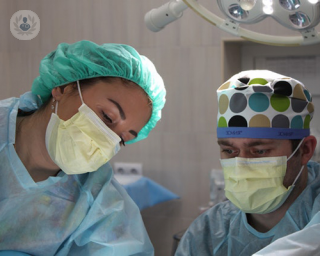Achalasia
What is achalasia?
Achalasia is a rare disorder that effects the oesophagus (food pipe), making it very difficult to swallow food and drink and for it to pass into the stomach. This happens when the ring of muscle at the end of the oesophagus does not open fully, if at all. As a result, food and drink cannot be squeezed down into the stomach and gets stuck, and is often regurgitated.

What are the symptoms of achalasia?
Not everyone with this disorder has symptoms, but those who do can experience:
- Regurgitating undigested food
- Chest pains
- Coughing fits
- Heartburn
- Excessive saliva and drooling
- Gradual weight loss
The onset of achalasia can happen at any point in your life and if left untreated, the chances of oesophageal cancer developing are increased. If you experience any of these symptoms, it is important to see the right specialist so that a diagnosis can be made, and a treatment plan put in place.
What causes achalasia?
The cause of achalasia is largely unknown, however, it is thought to occur when nerves in the oesophagus are damaged and cease to work fully, causing the ring of muscle at the end of the oesophagus to stop working. The cause of this nerve damage is not known, but could be linked to infection, or possibly autoimmune conditions. There is also some possibility that achalasia is hereditary and runs in families.
How is achalasia diagnosed?
Diagnosis of achalasia can be difficult as it shares symptoms with other digestive disorders. If your specialist suspects you have achalasia, the following tests are likely to be carried out:
- Manometry – a small tube is inserted into the nose or mouth into the oesophagus to measure for muscle contractions when you swallow and to detect any pressure that builds up.
- Endoscopy – an endoscope passes down the throat so that the oesophageal lining can be examined, and can identify any blockages that may be present.
- X-rays – here the patient swallows a liquid containing barium, and then x-rayed. This procedure highlights how much time it takes for the liquid to pass into your stomach.
What is the treatment for achalasia?
Although there is no current cure for achalasia, there are certainly measures to alleviate the symptoms. The key to successful treatment is to make it easier for the patient to swallow when eating and drinking. Certain medicines are designed to relax the oesophageal muscles, making it easier to swallow, however, the effects are only temporary.
Other treatment options include:
- Botox injections – injected into the ring of muscle that allows food into the stomach as the botox causes it to relax.
- Surgery – via keyhole surgery (laparoscopy), the ring of muscle is cut and can permanently make it easier to swallow.
- Dilating the muscle – a balloon is passed down the oesophagus to help stretch out the ring of muscle that lets food into the stomach, which makes swallowing easier and less painful.















